Irish Folklore Inspired by Nature: Unveiling the Mystical Tales
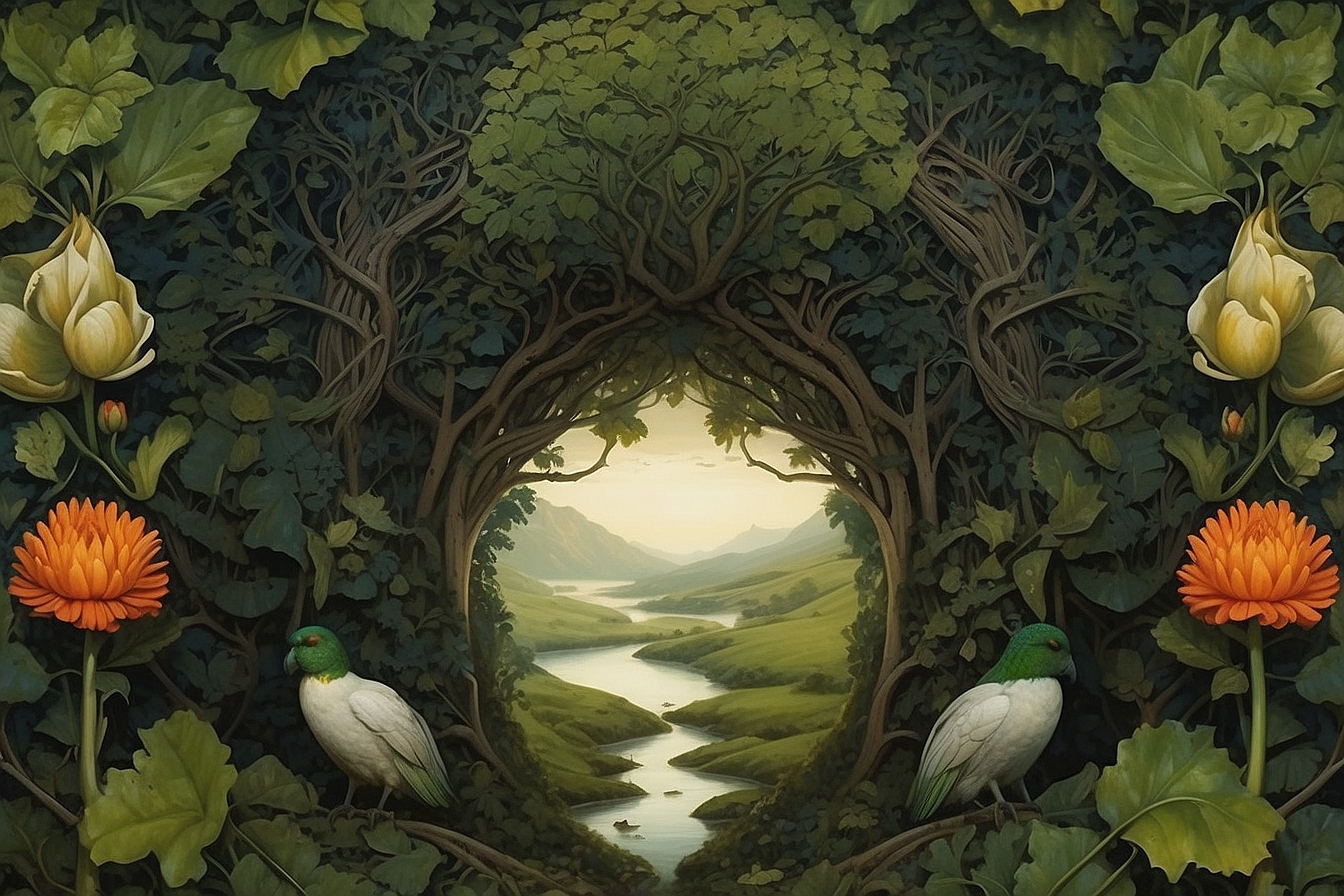
Updated On: April 23, 2024 by Noha Basiouny
Nature-inspired Irish folklore is a captivating tapestry woven from the country’s verdant landscapes and rich history. Nature plays a quintessential role in many of its tales, where the line between the physical and the supernatural seamlessly blends. Ireland’s ancient myths and legends are deeply rooted in its majestic hills, mysterious forests, and rugged coastlines. These stories are not just mere entertainment; they serve as a testament to the Irish people’s profound connection and respect for the natural world around them.
Throughout the folklore, one may encounter mystical beings that embody the forces of nature, from mischievous leprechauns guarding their gold to the fearsome Pooka, which embodies the unpredictable nature of the wild. Figures like Macha, the goddess of horses, highlight the importance of animals in Celtic mythology, whilst the reverence for trees and bodies of water is evident in stories about sacred groves and magical wells.
Table of Contents
Origins and History of Nature-Inspired Irish Folklore
In exploring the rich tapestry of Irish folklore, we uncover a past steeped in mythological traditions and shaped by Christian tenets. Our journey through folklore begins with its ancient roots and follows its evolution through centuries of storytelling.
Early Beginnings and Christian Influences
Ireland’s folklore originated in a time when mythology and history entwined to form the country’s spiritual and cultural narrative. Mythology in ancient Ireland was not merely a collection of stories but a pivotal part of societal belief systems. Divinities and mythical ancestors featured prominently in these tales, embodying the forces of nature and human psychology.
With the arrival of Christianity in the fifth century, these pagan beliefs underwent a transformation. Christian monks, fluent in Old Irish, began transcribing tales that had been orally shared for generations. In doing so, they created a unique fusion of Christian and pagan elements. Saints intermingled with ancient heroes and biblical narratives adopted characteristics of Irish storytelling, blending spiritual beliefs and preserving the essential foundations of Ireland’s mythic past.
Preservation through Oral Tradition
Oral tradition has been the cornerstone of maintaining Irish folklore throughout history. Storytelling wasn’t just an art; it was an integral means of sustaining cultural identity and keeping ancestral wisdom alive. In remote rural communities, the seanchaí, or storyteller, performed a pivotal role, retaining and conveying tales of fairies, leprechauns, and epic sagas with each recitation.
This oral tradition has been so effective that Ireland’s mythology remains amongst the best-preserved in Europe. Immense bodies of work have been recorded, offering us insights into the morals, beliefs, and ethics deeply rooted in Irish society. Through spoken word, generations have kept the timeless chronicles of heroes, folklore, and traditions, ensuring that these stories continue to captivate and educate us about our cultural heritage.
The Supernatural Elements of Irish Folklore
In the rich tapestry of Irish folklore, the supernatural elements are deeply woven into the fabric of both the landscape and the collective consciousness. The tales are redolent with mystical beings that exist between our world and the otherworldly realms.
The Aos Sí and the Otherworld
In Irish mythology, the Aos Sí represent a powerful spiritual race comparable to the fairies or elves of other cultures. These supernatural beings are said to live in an invisible world that exists alongside our own, known as the Otherworld. This realm is a place of eternal youth and beauty, where food and drink are abundant, and music carries enchanting powers. Our ancestors maintained strong beliefs that the Aos Sí influenced the land’s prosperity, and therefore, they were often honoured or appeased with offerings.
Legendary Creatures and their Meanings
Folklore also includes a host of legendary creatures, each with its own unique symbolism and significance. Take, for instance, the leprechauns, often depicted as mischievous cobblers guarding their pots of gold. They embody that great rewards may come to those who outwit adversity. With their mournful wails, the banshees are messengers of death, signalling the passing of someone within the household they’ve attached themselves to.
Fairies are seen as powerful forces, both kind and wrathful, reminding us that nature exists in a delicate balance. Although not as widely known, the Púca is a shape-shifter capable of bringing good or ill fortune; it embodies the unpredictable nature of existence.
As storykeepers, we can’t overlook the Tuatha Dé Danann, a race of supernaturally gifted people in Irish myth. They represent the ideal of magical prowess and sovereignty, having controlled Ireland before being defeated and retreating to the Otherworld.
Each of these entities – Fairy, Spiritual, Supernatural, Fairies, Leprechauns, Banshees, Púca, and the Tuatha Dé Danann – play their part in the grand narrative of nature and existence that permeates our folklore. These stories serve not merely as entertainment but as a reflection of our ancestors’ respect for the land they lived on and the forces they believed governed it.
Key Figures and Heroes in Irish Myths
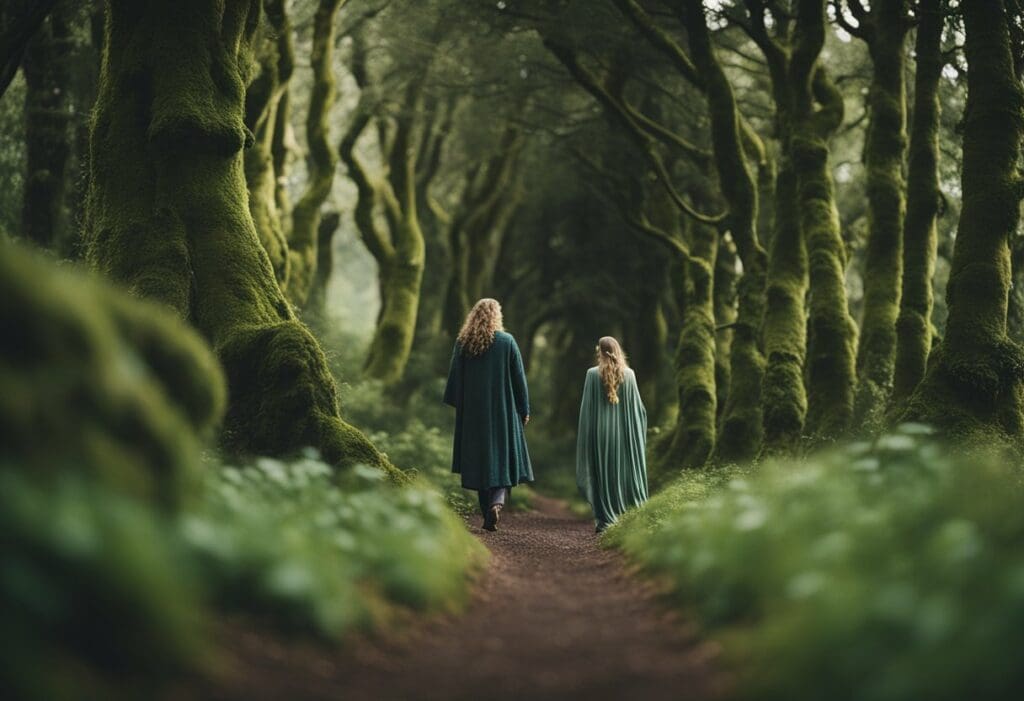
Ireland’s myths are woven with the valour of legendary warriors and sagely kings, each embodying the spirit of the natural world that inspired their tales. Let’s traverse the heroic paths and vibrant narratives that define these characters.
Warriors and Kings
At the heart of Irish mythology stands the formidable warrior Cú Chulainn, a central figure in the Ulster Cycle, known for his superhuman abilities and his role in the epic Táin Bó Cúailnge. His life, a tapestry of heroism and tragedy, intricately portrays the warrior ethos of ancient Ireland. Fionn Mac Cumhaill, also known as Finn MacCool, is another monumental hero, celebrated as a wise and benevolent leader known for his prowess and sage judgement.
Bold rulers are also paramount in these narratives, with many kings serving as both protectors and patrons of their realms. Their rule was often marked by battles with neighbouring lands and steeped in the pursuit of justice and prosperity for their subjects.
The Fianna and their Tales
The Fianna were bands of noble warriors led by none other than Fionn Mac Cumhaill, famous for their roles in Irish folklore. These warriors are best depicted in stories that constitute the Fianna Cycle, renowned for their loyalty to each other and to Ireland. The Fianna were known not just for their strength in battle but also for their wisdom and connection to the natural world. Their adventures, often intricately connected with the magical and the mystical, remain an integral part of Ireland’s cultural legacy.
In these subsections, we’ve captured the essence of Ireland’s most cherished heroic figures and the legendary groups that populate its folklore—entities that continue to foster a sense of wonder and cultural pride.
Sacred Landscapes and Natural Elements
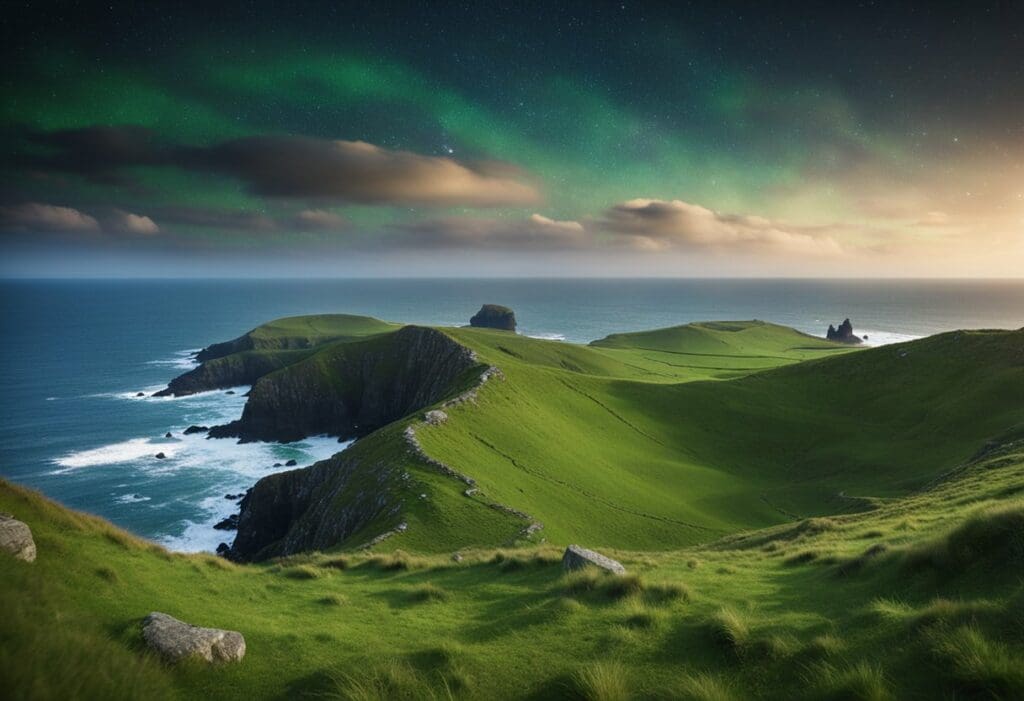
In our exploration of Irish folklore, we recognise the profound connection between the natural world and spiritual beliefs. This section will cast light on the treasured trees and plants alongside the venerated sites and festivals that emanate from Ireland’s rich, traditional tapestry.
Significance of Trees and Plants
Among the verdant landscape of Ireland, certain trees and plants carry a weight of cultural and sacred significance. The oak tree, emblematic of strength and endurance, is deeply rooted in Irish mythology. Its presence is often found at the heart of druidic worship and is a symbol of the Celtic world. The hawthorn stands as another mystical entity, commonly associated with the Otherworld and frequently linked to the mischievous fairies of Irish lore.
The shamrock, a trifoliate plant, is internationally renowned as a symbol of Ireland and is said to have been used by Saint Patrick to illustrate the Christian Holy Trinity. Its simple yet powerful iconography showcases the symbiotic relationship between nature and Irish cultural identity. Similarly, there’s the Tír na nÓg, the Land of Eternal Youth, a paradisiacal realm in Irish myth, reflective of the Irish’s adulation for nature’s perpetual beauty and mystery.
Sacred Sites and Festivals
Ireland is adorned with sites held sacred for their historical and mythological relevance. Many of these locales intertwine with natural landscapes, forming spaces of significant spiritual resonance. The Hill of Tara is one such place, purported to once host the High Kings of Ireland, imbued with a sacred aura and bound to the living environment.
Cultural celebrations deeply entwined with natural cycles, such as Beltane and Samhain, are marked by festivals that honour the changing seasons. These pivotal points in the year are embraced with rituals that bespeak the harmonious relationship between the Irish people and their land, reflecting ancient respects and contemporary reverences alike.
Within these traditions and beliefs, we find an inherent veneration for the hare, an animal often shrouded in mystical connotations and linked to the moon in Celtic mythology. These creatures, seen as messengers of the Otherworld, grace many an Irish tale, their swift agility and elusive nature inspiring awe and wonder.
Through an understanding of these sacred landscapes and natural elements, we deepen our connection with Irish folklore, appreciating its uniqueness and the wisdom rooted within.
Influence of Fairytales and Folk Tales
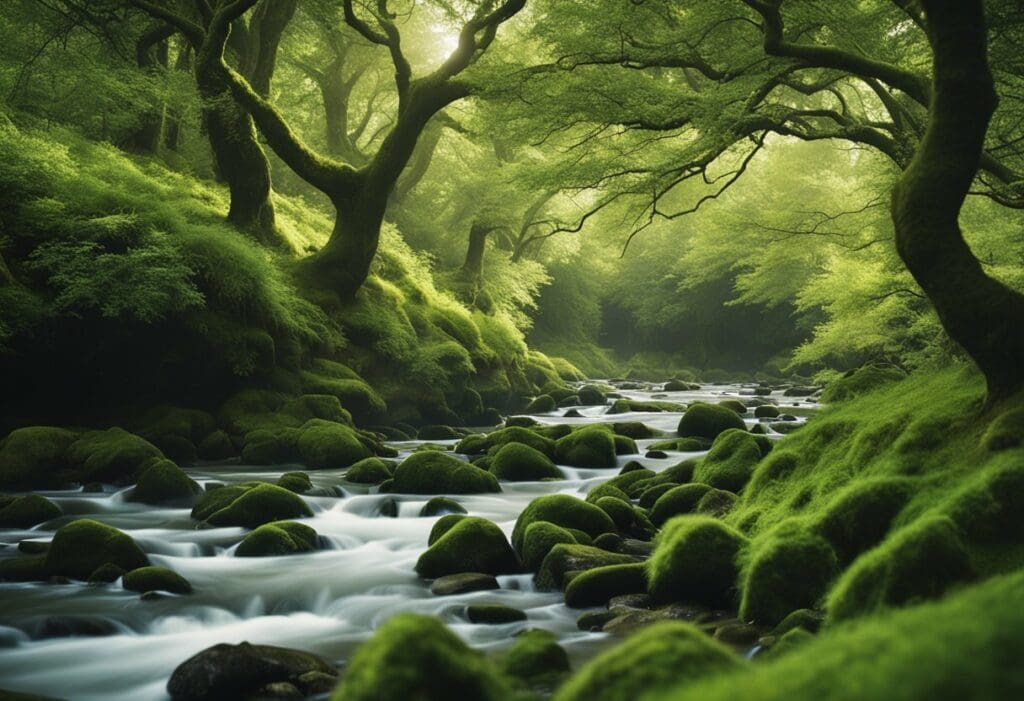
Fairytales and folk tales within Irish tradition illustrate the intricate tapestry of moral and ethical teachings as well as natural elements woven into stories of transformation and cheeky trickery. These narratives often feature entities deeply connected with nature, granting us insight into the psyche of past generations through their vibrant and sometimes shadowy imaginings.
Moral and Ethical Lessons
Irish folklore presents a myriad of moral and ethical lessons. For instance, the fairies, or ‘Aos Sí‘, stand as guardians of nature, and tales involving them often emphasise the importance of respecting the natural world. Such stories reinforce the belief that one’s actions carry consequences, be it the disturbance of a fairy fort or the mistreatment of the environment. Superstitions also played a key role, offering explanations for the unexplainable and ensuring that ethical bounds were adhered to through the fear of retribution from the supernatural.
The changeling legend, wherein a fairy child is exchanged with a human one, could be interpreted as a cautionary tale about the perils of neglecting one’s familial duties.
Transformation and Tricks
Transformation is a central theme in many Irish tales, capturing the ebb and flow of the natural world. The selkie, a creature that can transform from a seal to a human by shedding its skin, symbolises the constantly changing and interconnected relationship between humans and nature. This transformation, often hidden or revealed suddenly, reflects the unpredictable and mutable qualities of the natural domain.
Tricks and deception are frequently encountered in the lore of Ireland, with creatures such as the Dullahan, a headless rider, or the Pooka, a shapeshifter, leading to unexpected outcomes for the unwary. Such characters command respect for the unknown and often serve as a reminder that not everything is as it appears. The leprechauns are a light-hearted embodiment of trickery, perpetually tricking mortals into looking away so they might escape without granting wishes or revealing their pots of gold.
These enduring narratives, from the mischievous leprechauns to the mournful banshee wails, highlight the deep connection between Irish folklore, nature, and human conduct. Together, they form a cultural anthology that continues to influence our understanding of the natural world and our place within it.
The Living Traditions of Irish Culture
In this section, we explore the vibrant expressions of Irish culture that continue to captivate and enchant. Our focus lies particularly on the role that music and dance, along with folk customs and practices, play in keeping the Celtic spirit alive.
Music and Dance
Irish culture boasts a remarkable legacy in music and dance, both deeply steeped in Gaelic tradition. Traditional Irish music typically involves a variety of instruments like the fiddle, tin whistle, and the bodhrán. The music is known for its lively jigs and reels that often spur impromptu ceilidh (social gatherings involving music and dance).
Dance forms such as the Irish stepdance have gained international fame, owing much to their intricate footwork and precise movements. One cannot mention Irish dance without conjuring images of shows like ‘Riverdance’ that have introduced the rhythmic excitement of Irish dance to a global audience.
Instrumental in Irish Music:
- Fiddle
- Uilleann Pipes
- Bodhrán
- Tin Whistle
Popular Irish Dances:
- Sean-nós (old-style)
- Set Dancing
- Stepdance
Folk Customs and Practices
Folk customs and practices are the sinews connecting Irish people to their Celtic past. Seasonal festivals like Samhain or modern-day Halloween and Imbolc, which signals the beginning of spring, have pagan roots and are still observed with fervour. Weddings and gatherings often include customary rituals grounded in Irish folklore, such as the handfasting ceremony.
Material culture in Ireland encompasses a range of objects that carry historical significance, from the intricately designed Celtic crosses to the Claddagh rings symbolising love, loyalty, and friendship. These artefacts serve as a tangible reminder of the stories and mythology imbued in everyday life.
Festivals & Seasons:
- Samhain – Beginning of the ‘darker half’ of the year
- Imbolc – The start of spring
Ceremonial Customs:
- Handfasting at Weddings
- Honouring of Holy Wells
Through the efforts to preserve and share music, dance, and ancient customs, Irish culture continues to be a living, breathing aspect of the social fabric. It is our collective responsibility to cherish and promulgate these traditions for posterity.
Spiritual and Material Dualism in Folk Beliefs
Irish folklore has long been a tapestry woven with threads of both spiritual and material elements. These narratives are deeply rooted in our natural environment and demonstrate a unique dualism that reflects the Irish way of perceiving the world.
Spiritual Beliefs: The Irish have historically considered nature as a gateway to the otherworldly, an idea resonating with the belief in superstitions and religious significance. Trees, for instance, were not just flora but revered symbols harbouring spirits.
- Oak: strength and wisdom
- Willow: healing and mystique
Material Traditions: On the material side, these beliefs had tangible expressions, such as planting an elder tree to ward off evil or carrying a four-leaf clover for good luck. Such practices exemplify how folklore permeated daily life, blending the ethereal with the practical.
In romantic terms, love entwined itself with both the spiritual and the material realms, featuring in tales where lovers’ fates were often sealed by otherworldly interventions or the breaking of a superstition.
| Traditional Love Beliefs | Description |
|---|---|
| Hawthorn Tree | Planting a hawthorn in the home’s vicinity was thought to attract positive spiritual energies conducive to love. |
| Handfasting Ritual | A religious ceremony where couples bound their hands together as a symbol of their material union. |
As we recount these stories and customs, it is evident that superstitions and one’s faith have continuously influenced the way the Irish interact with nature. This interplay between the spiritual and the material, where each imparts significance to the other, is a foundational pillar of our cultural heritage.
Folklore’s Role in Modern Irish Society
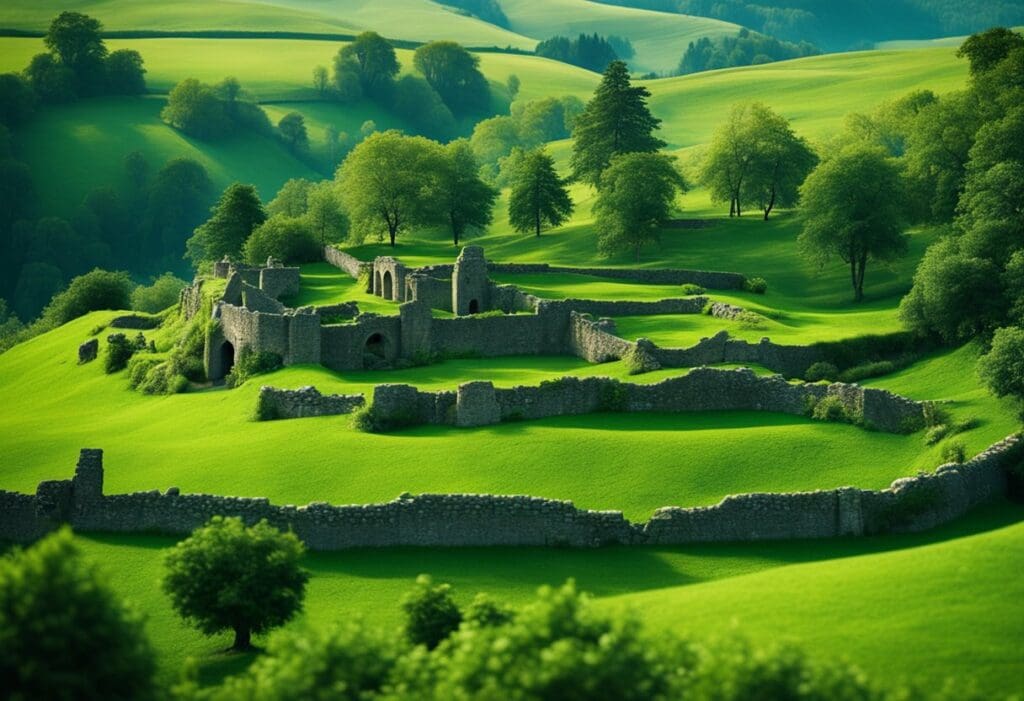
Irish folklore remains a vital element in understanding how modern Ireland navigates between the echoes of the past and the rhythms of contemporary life. It serves as a vessel for cultural identity and sparks inspiration across various facets of modern society.
Cultural Identity and Continuity
We see folklore as not only a historical tapestry but also as a continuing dialogue between generations in Ireland. In the hands of youth and educators, Irish culture is invigorated and perpetuated. The stories and legends rooted in Ireland’s landscapes act as constant reminders of our nation’s heritage and contribute to a sense of place and identity. Modern Irish society utilises these narratives both as a means of preserving a shared history and celebrating a national uniqueness that is enriched by the passing of time.
Folklore in Contemporary Media
Contemporary media draws heavily on our rich traditions, infusing them with new life. Films and television series borrow from Ireland’s mythical tapestry, extending their reach and relevance to a global audience. Notable examples include animations like The Secret of Kells and Song of the Sea, which have shed light on the mystical aspects of Irish folklore, enchanting both children and adults alike. This synergy of old and new exemplifies how inspiration from age-old folklore continues to resonate within modern Irish culture, demonstrating its undiminished influence and relevance.
Famous Superstitions and their Origins
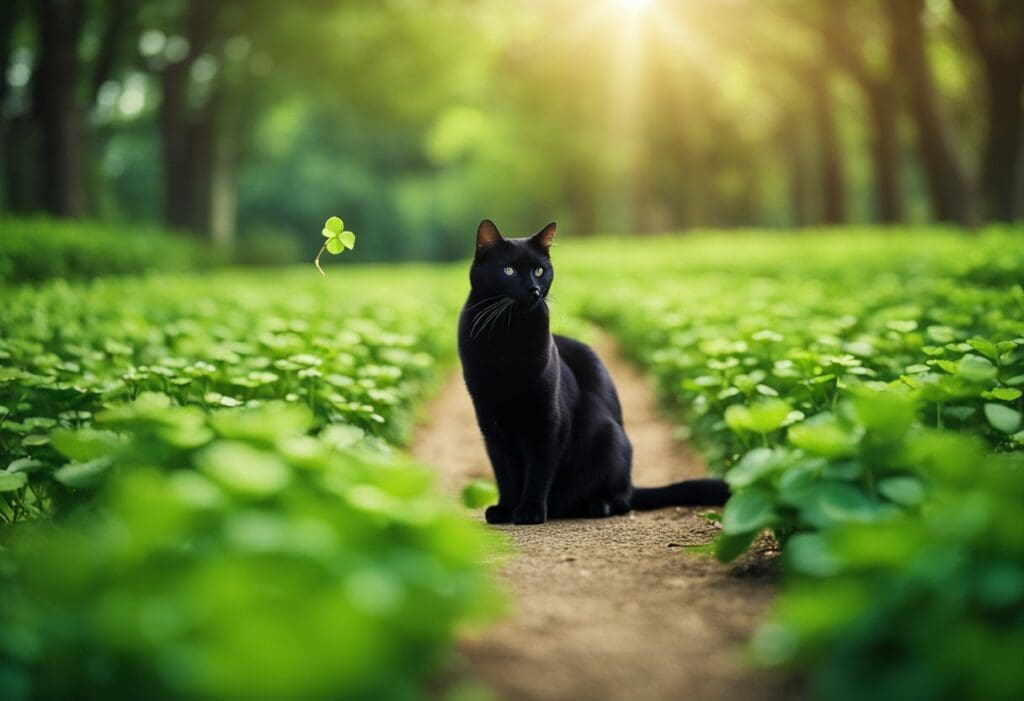
Superstitions have woven themselves into the fabric of Irish folklore across the ages. One such superstition is the belief that encountering a black cat signifies impending misfortune. This notion likely stems from the cat’s historic association with witchcraft and the supernatural.
In contrast, some old wives’ tales suggest that meeting a red-haired person at the start of a journey brings good luck, possibly harking back to the high regard for red hair in Celtic mythology. The bewailing of a banshee, an omen of death, has its roots in the Irish tradition wherein women lamented the deceased—a wail believed to be an echo of these mourning cries.
The placing of shoes on a table is considered an ill omen, a superstition thought to have originated from the practice of laying a deceased’s shoes on a table as a sign of respect. The sight of a solitary fox crossing one’s path is also regarded with superstition, often interpreted as a sign to be cautious or a warning of deceit.
Superstitious Entities and Beliefs:
- Black Cat: Unlucky if crossing your path
- Red Hair: Lucky when starting a journey
- Banshee’s Wail: Omen of death
- Shoes on Table: Sign of impending misfortune
- Fox Sighting: Warning of deceit
These superstitions often came about as ways for our ancestors to make sense of the world around them. Today, they remain a testament to the richness of Irish storytelling and our connection to nature and the elements.
Legendary Festivals and Celebratory Customs
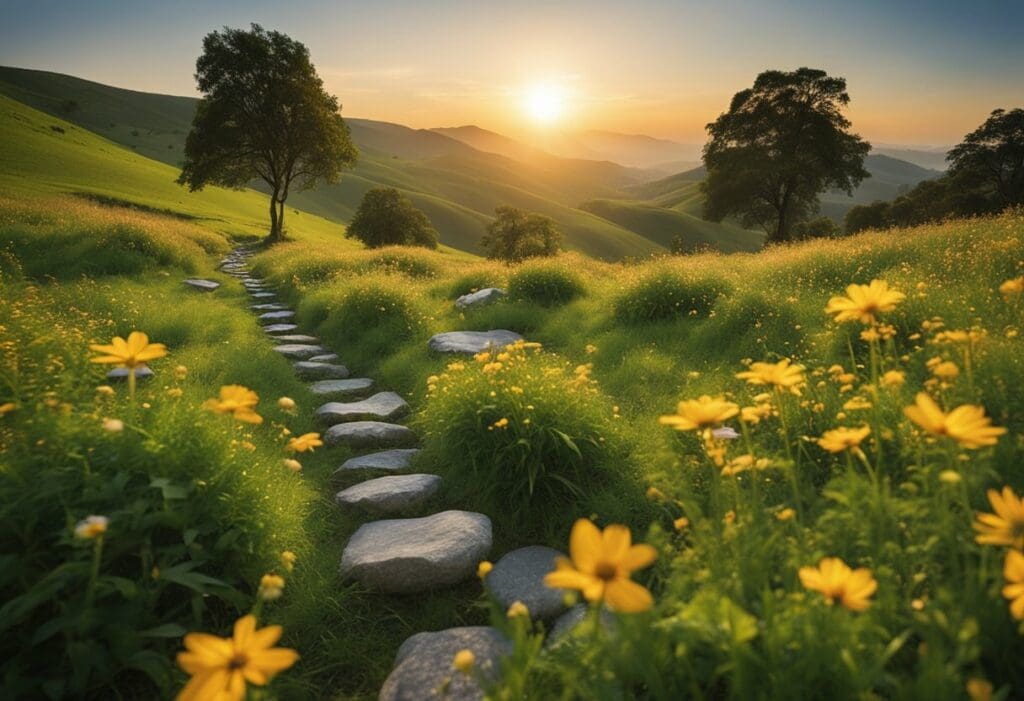
In our exploration of Ireland’s natural-inspired folklore, we cherish the vibrant festivals and customs that have withstood the test of time. These events embody the country’s heartfelt connection to its environment, each one an epic narrative interwoven with feats of strength, spiritual devotion, and community triumph.
St Patrick’s Day stands as one of our most internationally recognised festivities. Celebrated on the 17th of March, this feast honours St. Patrick, Ireland’s patron saint, symbolising the arrival of Christianity. Streets bloom with parades as spectators adorn themselves in green, a nod to the verdant landscapes of our Emerald Isle.
Equally revered are Ireland’s ancient fire festivals – celebrations marking the year’s division. The Imbolc commences as winter wanes, invoking the rebirth of the land. Beltane, held on the first of May, rejoices in the heart of spring, while Lughnasadh recognises the onset of harvest. As the year closes, Samhain—our predecessor to Halloween—ushers in winter, when the veil between worlds is at its thinnest.
These festivals embody our admiration for natural transitions, serving as collective achievements where camaraderie and reverence intertwine. Stories told, and songs sung around crackling flames renew our spiritual connection, affirming our role as custodians of an age-old cultural legacy. We’ve compiled more unique insights into these and other cultural practices on Connolly Cove, where we extend our passion for Irish culture to a global audience.
In essence, our festivals are tapestries of legend and landscape, honouring nature’s rhythm through jubilance and unity. They are moments where the right hand of fellowship extends across communities, sharing joy and respect for the heritage we carry forward.
Frequently Asked Questions
We’ve gathered the most common questions about the rich tapestry of Irish folklore, specifically regarding its reflection of nature. Our answers will delve into the mythical characters, creatures, stories, and the profound connection between the supernatural and natural worlds found within Irish mythological tradition.
Who are the prominent characters in Irish mythology related to nature?
Prominent characters in Irish mythology that are related to nature include the Tuatha Dé Danann, a race of god-like figures who are each associated with various natural elements. The Dagda, for example, is an earth god with powers over life and death, agriculture, and fertility.
Which creatures from Irish folklore are associated with natural elements?
Creatures like the selkies and the merrows are associated with the sea, while leprechauns, pookas, and banshees have terrestrial and ethereal qualities. The Dullahan, a headless rider, often travels the countryside, connected to the land itself.
What are some of the best-known myths or stories from Irish folklore that feature nature prominently?
The Children of Lir is a well-known myth that features nature prominently, where the children are transformed into swans and must live for centuries on lakes and seas of Ireland. Another tale is that of Oisín in Tír na nÓg, highlighting the eternal youthfulness of a land enriched by natural beauty.
Can you suggest any Irish folk tales that describe the connection between nature and the supernatural?
Tales such as The Legend of Knockmany vividly describe the connection between nature and the supernatural. This tale recounts how the hero, Finn McCool, encounters supernatural entities amidst the landscape of Ireland.
Which gods or goddesses in Irish mythology are linked to natural phenomena?
Gods and goddesses like Áine, associated with summer and wealth, and Lugh, connected to storms and lightning, are directly linked to natural phenomena. Anu or Danu is often thought of as a mother goddess, representing the earth and fertility.
How are trees and other plants depicted within Irish mythological tradition?
In Irish mythological tradition, trees, notably the sacred Ash, Oak, and Thorn, are revered and hold significant mystical properties. The ancient Celts performed rituals and ceremonies in groves considered to be sacred, and plants like mistletoe were heralded for their healing powers and spiritual significance.






